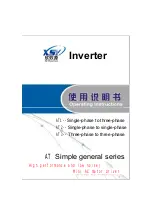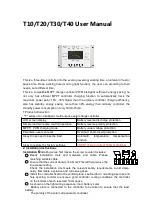
SECTION 7 |
General Information on Lead
Acid Batteries
28
- The resistances of the interconnecting cables will be balanced.
- All the individual batteries / battery strings will see the same
series resistance.
- All the individual batteries will charge / discharge at the same charging
current and thus, will be charged to the same state at the same time.
- None of the batteries will see an overcharge condition.
7.16 SIZING THE INVERTER BATTERY BANK
One of the most frequently asked questions is, “how long will the batteries last?”
This question cannot be answered without knowing the size of the battery system
and the load on the inverter. Usually this question is turned around to ask “How
long do you want your load to run?”, and then specific calculation can be done to
determine the proper battery bank size.
There are a few basic formulae and estimation rules that are used:
1. Active Power in Watts (W) = Voltage in Volts (V) x Current in Amperes (A) x Power
factor.
2. for an inverter running from a 12V battery system, the approximate DC current
required from the 12V batteries is the AC power delivered by the inverter to the
load in Watts (W) divided by 10 & for an inverter running from a 24V battery
system, the approximate DC current required from the 24V batteries is the AC
power delivered by the inverter to the load in Watts (W) divided by 20.
3. Energy required from the battery = DC current to be delivered (A) x time
in hours (H).
The first step is to estimate the total AC watts (W) of load(s) and for how long the
load(s) will operate in hours (H). The AC watts are normally indicated in the electrical
nameplate for each appliance or equipment. In case AC watts (W) are not indicated,
formula 1 given above may be used to calculate the AC watts. The next step is to
estimate the DC current in Amperes (A) from the AC watts as per formula 2 above.
An example of this calculation for a 12V inverter is given below:
Let us say that the total Ac Watts delivered by the inverter = 1000W.
Then, using formula 2 above, the approximate DC current to be delivered by the
12V batteries = 1000W ÷10 = 100 Amperes, or by 24V batteries = 1000W ÷ 20 = 50A.
Next, the energy required by the load in Ampere Hours (Ah) is determined.
For example, if the load is to operate for 3 hours then as per formula 3 above, the
energy to be delivered by the 12V batteries = 100 Amperes × 3 hours = 300 Ampere
hours (Ah), or by the 24V batteries = 50A x 3 hrs = 150 Ah.
Now, the capacity of the batteries is determined based on the run time and
the usable capacity.
















































